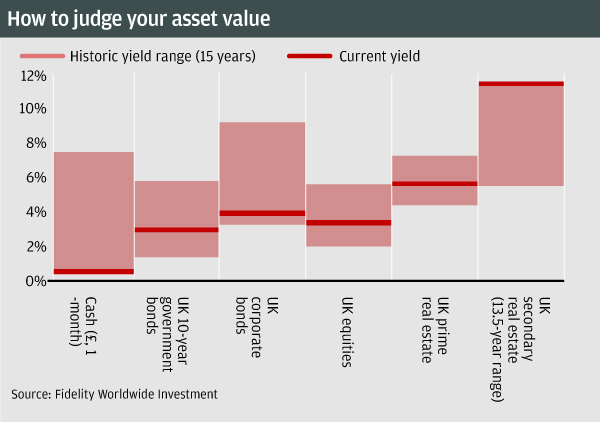The Plumbing and Mechanical Services Industry Pension Scheme is to expand its property investment for the second year running, as investors return to traditional commercial property in their hunt for value.
Schemes have started to look again at traditional commercial property – moving away from alternatives such as the long-lease sector – to chase high yields and address concerns about rate movements, experts have said.
Property assets: in brief
Commercial property is divided on quality into primary, secondary and tertiary assets, though there are no strict dividing lines between them.
Fidelity's Benedict compared primary property to AAA or AA-rated bonds, secondary assets to A or BBB rated bonds, and tertiary as the "absolute junk".
"There are some [tertiary] assets which you wouldn't touch with a barge pole," he said.
In 2012, the £1.4bn scheme increased its investment with property manager DTZ Investment Management by £25m to £125m, and it is in the process of bringing that total up to £150m. The assets targeted include offices, and town centre and out-of-town retail buildings.
“That is a strategic move,” said its secretary and pensions manager Robert Burgon. “It is returns we are looking for. We can get a yield of over 7 per cent on most of the properties in the portfolio.”
Managers and consultants have reported institutional interest is turning back to commercial property, particularly the historically high yields on offer in the secondary market (see graph).
Long-lease property, which has been popular over the past couple of years for its hedging properties, is coming more into question as investors become concerned about the impact on the yields of these bond-proxy investments that could result from the end of quantitative easing.
“There has been a relatively quick shift in sentiment for property over the last six months,” said Andrew Jacobson, senior investment consultant at LCP.
“We have also seen some value in the secondary market and we are also more positive about that sector as well, albeit mindful of the risks,” he added.
Adrian Benedict, investment director in the European real estate team at Fidelity Worldwide Investment, said the manager had started to see money coming out of long-lease and going into the secondary market.
“UK is the only developed market in the world with such a wide gap between prime and secondary yields,” he said, pointing to average spreads of six percentage points above prime assets.

Angus Henderson, head of business development at F&C REIT Asset Management, agreed there had been a “shift to risk-on”, but said pension funds still want assets such as long-lease, at the right price.
He said: “It is more about the pricing they are going to get and a bit of concern about where interest rates are going to be in the medium term.” The yield on traditional property provides a better buffer against any increase in interest rates, he added.
How the scheme chose its mandate
As reported in March, the scheme puts its strong investment performance over the past few years partly down to its ‘sell high, buy low’ experience in the property market.
The plumbing scheme’s fund is a segregated rather than pooled mandate, a decision the scheme took following its experience of the volatility of the property market, having been advised that the mandate size meant a segregated option was available.
“Last time around we realised we were very fortunate because the predictions for commercial property were not good,” said Burgon. “If we had stayed in we may have found ourselves stuck in.”
But the scheme is not currently considering alternatives such as ground rents or residential property, such as the £20m investment made by Islington last year.
“There are taxation issues for residential property,” said Burgon. “VAT is one of the issues that complicate things.”






















